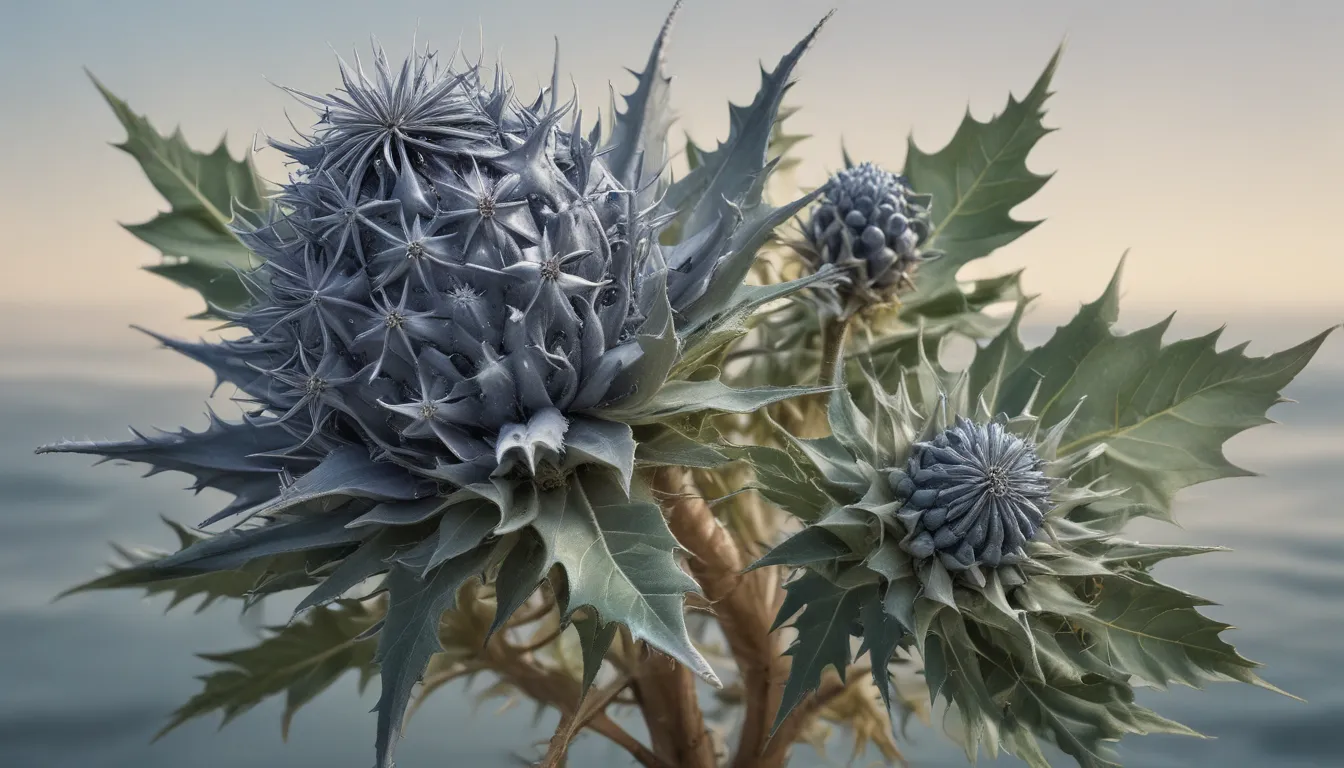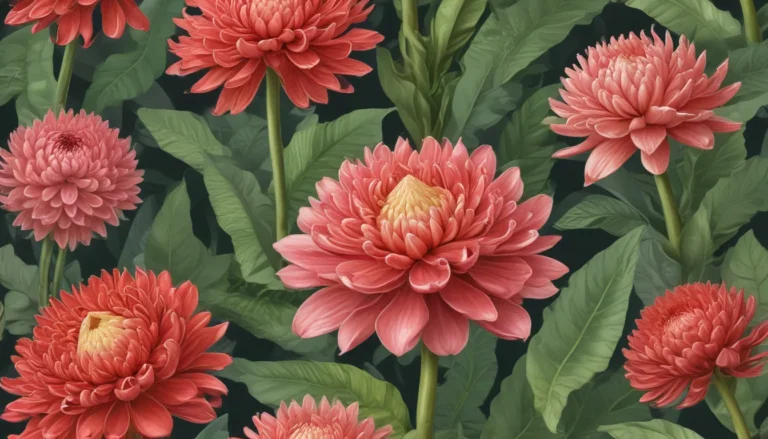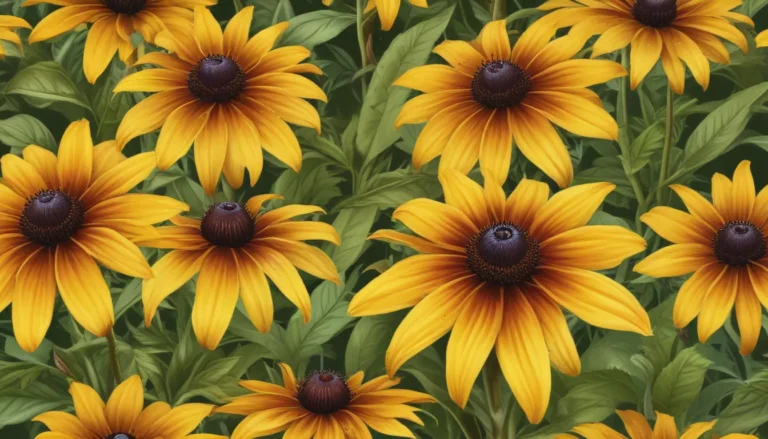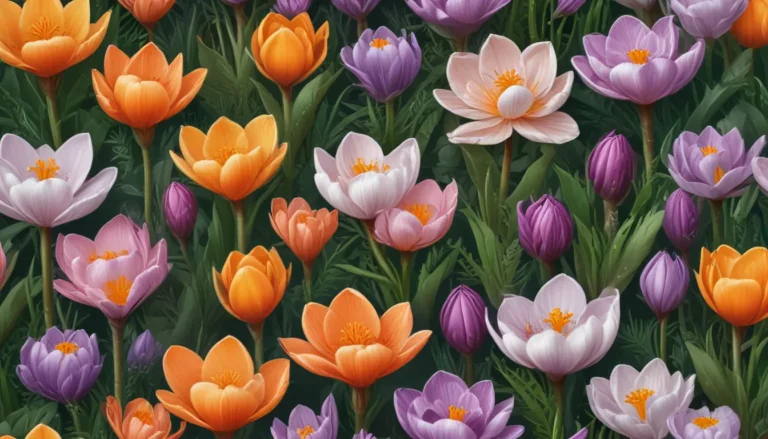The pictures we use in our articles might not show exactly what the words say. We choose these pictures to make you interested in reading more. The pictures work together with the words but don’t take their place. The words still tell you the important facts.
Welcome to the captivating world of Sea Holly, also known as Eryngium, a plant that has captured the hearts of gardeners and flower enthusiasts worldwide. With its spiky blue-gray foliage and vibrant blooms, Sea Holly stands out as a truly extraordinary plant. But beyond its stunning appearance lies a rich history and fascinating characteristics that make it a subject worth exploring. In this article, we will delve into the depths of Sea Holly's mysteries and uncover 14 extraordinary facts about this coastal gem.
Sea Holly: The Prickly Beauty
Sea Holly, scientifically known as Eryngium, is a stunning perennial plant that belongs to the Apiaceae family. Its distinctive spiky leaves and vibrant blue flower heads add a touch of uniqueness to any garden, making it a standout feature in any landscape.
A Coastal Delight
As its name suggests, Sea Holly is commonly found along coastal areas, particularly in dune systems and salt marshes. This plant is well-adapted to thrive in harsh environments, including salt spray and sandy soils, showcasing its resilience in the face of challenging conditions.
Resilient in the Face of Drought
One of Sea Holly's remarkable qualities is its ability to thrive in drought-like conditions. With its deep-reaching taproot, Sea Holly can access water from deep within the soil, making it a resilient choice for regions prone to water scarcity.
Guardians of Butterflies
Sea Holly's vibrant blue flower heads serve as a delightful attraction for butterflies and other pollinators. By planting Sea Holly in your garden, you can create a welcoming habitat for these beautiful creatures, enhancing biodiversity in your local area.
Medicinal Marvel: Sea Holly’s Healing Properties
Sea Holly has a long history of use in traditional medicine, believed to possess diuretic, anti-inflammatory, and digestive properties. The roots and leaves of Sea Holly are often brewed into teas or tinctures to alleviate various ailments, showcasing its versatility beyond its aesthetic appeal.
A Haven for Bees
Bees are also drawn to the nectar-rich flowers of Sea Holly. By incorporating Sea Holly into your garden, you can support bee populations and play a role in sustaining the essential process of pollination.
Symbolic Significance
Sea Holly carries symbolic meanings across different cultures, often associated with protection, good luck, and perseverance. In some traditions, it is considered a symbol of love and fidelity, adding layers of cultural significance to this already captivating plant.
The Art of Arrangement
The uniquely-shaped flower heads of Sea Holly make it a popular choice for floral arrangements. Whether used fresh or dried, Sea Holly adds a striking touch to bouquets and floral displays, creating an intriguing texture and visual appeal that sets it apart from other blooms.
Edible Elegance
Surprisingly, Sea Holly is also edible! The young leaves and shoots can be used in salads, imparting a slightly tangy and spicy flavor. Its delightful blue flowers can be candied or used to garnish desserts, elevating dishes with a touch of elegance.
A Diverse Array of Species
The Eryngium genus boasts over 250 different species of Sea Holly, each with its own unique characteristics. From vibrant blue hues to silver-gray foliage, there is a Sea Holly variety to suit every taste and garden style, offering a diverse array of options for plant enthusiasts.
Embracing All Climates
Sea Holly is a hardy perennial that can thrive in a range of climates, tolerant of both heat and cold. This adaptability makes it a versatile choice for gardeners in various regions, showcasing its ability to flourish in diverse environments.
Unraveling Folklore
According to folklore, Sea Holly was believed to possess magical properties, capable of attracting luck and repelling negative forces. It was often hung in doorways or carried as a protective talisman, highlighting its mystical allure in ancient beliefs.
Cultivating a Sustainable Garden
Sea Holly is an excellent choice for sustainable gardening practices. With minimal maintenance requirements, resistance to pests and diseases, and its role in providing food and shelter for beneficial insects, Sea Holly contributes to creating an eco-friendly and resilient ecosystem in your garden.
Embark on a journey of discovery as you explore the wonders of Sea Holly, a plant that continues to captivate with its extraordinary beauty and versatile qualities. Whether you're a seasoned gardener, a nature enthusiast, or simply curious about the world of plants, Sea Holly is a fascinating subject that holds a wealth of secrets waiting to be revealed.
Conclusion: Delving into the Depths of Sea Holly’s Mysteries
Sea Holly, also known as Eryngium, is a plant of extraordinary beauty and significance. From its unique appearance to its medicinal and culinary applications, Sea Holly has captured the attention of plant enthusiasts worldwide. Its ability to attract butterflies and bees, its symbolic meanings, and its role in sustainable gardening practices further highlight the diverse qualities of this captivating plant. Whether you seek to enhance your garden's biodiversity, create stunning floral arrangements, or simply appreciate the wonders of nature, Sea Holly is a plant that continues to inspire and enchant.
FAQs: Navigating the World of Sea Holly
Q: How tall do Sea Holly plants grow?
A: Sea Holly plants can range in height from 1 to 3 feet, depending on the variety and growing conditions.
Q: Does Sea Holly require a lot of sunlight?
A: Sea Holly thrives in full sun to partial shade, preferring at least 6 hours of direct sunlight per day for optimal growth.
Q: Can Sea Holly be grown in containers?
A: Yes, Sea Holly can be grown in containers. Ensure the container is large enough to accommodate the plant's root system and allows for proper drainage.
Q: Is Sea Holly deer-resistant?
A: Sea Holly is often considered deer-resistant due to its tough, spiky foliage. However, hungry deer may still browse on the plant if other food sources are scarce.
Q: What pollinators are attracted to Sea Holly?
A: Sea Holly is a magnet for bees and butterflies, thanks to its nectar-rich flowers that provide valuable food sources for these beneficial insects.
As you journey through the world of Sea Holly, may you discover the hidden wonders and secrets that make this plant truly extraordinary. Embrace the beauty and significance of Sea Holly as you cultivate your garden, create floral masterpieces, and embrace the magic of the natural world.






